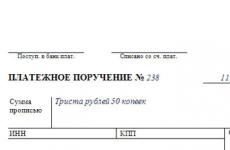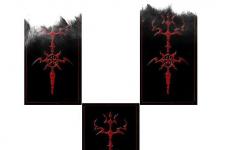General labor protection requirements. operators of control stations of the mill section
The issue was approved by Resolution of the State Committee for Labor of the USSR, the Secretariat of the All-Union Central Council of Trade Unions dated December 27, 1984 N 381/23-157
(as amended by the Resolution of the State Committee for Labor of the USSR, the Secretariat of the All-Union Central Council of Trade Unions dated June 12, 1990 N 233/9-49,
Order of the Ministry of Health and Social Development of the Russian Federation dated October 20, 2008 N 578)
Control room operator
§ 62. Control station operator 1st category
Characteristics of work. Servicing the console at simple control stations that do not directly affect the pace of work and productivity of the units. Control from the remote control of pushers and ejectors of metal from heating devices, roller conveyors for feeding and landing metal, roller conveyors for transporting and laying metal in finishing areas and other mechanisms for feeding, moving, edging, straightening, cutting, stripping, sorting, cleaning and transporting hot and cold metal. Starting, stopping and regulating the speed of movement of mechanisms. Checking and ensuring the good condition of serviced mechanisms. Cleaning and lubricating equipment, participating in its repair.
Must know: operating principle of the serviced mechanisms; system, frequency and places of lubrication; types, composition and properties of lubricants; control circuits for serviced equipment.
§ 63. Control station operator 2nd category
Characteristics of work. Maintenance of the console at simple control stations that affect the pace of work and productivity of units. Remote control of cold metal cutting saws, slappers on pockets of rolling mills, cold metal straightening machine, intermediate roller tables, roller tables in front of and behind the inspection table, coil conveyor, stamping machine, lifting and rotating table and other mechanisms.
Must know: the basics of the technological production process at the serviced site; device, electrical control circuits of the serviced mechanisms; metal assortment; basics of electrical plumbing.
§ 64. Control station operator of the 3rd category
Characteristics of work. Maintenance of the console at control stations of medium complexity, affecting the pace of work and productivity of units. Remote control of roller conveyors and slappers of refrigerators, pushers, feed and discharge roller conveyors of a roller straightening machine on sheet, large-section, rail and beam and universal mills, section stackers, roller straightening machine for hot straightening of sheets, winders, unwinders of the cutting unit for dissolving rolls, inspection tables and sheet turners, transverse shears cutting sheets with movable stops and other mechanisms. Remote control of overhead cranes.
Must know: device, rules of technical operation of the equipment being serviced and electrical control circuits for it; electrical plumbing; location of technological equipment.
§ 65. Control station operator of the 4th category
Characteristics of work. Maintenance of the console at complex control stations that affect the pace of work and productivity of units. Remote control of flying shears on continuous mills; disc shears on roll unwinding units; mechanisms for receiving hot metal with branding and doubling on blooming, large-section and rail and beam mills; butt welding machines on profile bending units; rolling stock sorting machine; hot cutting shears on bloomings and slabs; hot cutting saws on rail and beam and large-section mills; hot cutting saws on blooming machines with an hourly productivity of up to 500 tons of rolled stock; a unit for washing polished sheets and applying coatings with a protective film and other mechanisms. Remote control of individual units and mechanisms of an automatic metal calibration line, individual units of a continuous line for the production of metal plastics and for grinding the surface of steel plates and strips with a continuous abrasive belt.
Must know: device and operating rules of the automatic line; technological production process at the serviced site; operating principle of automation and blocking; technological operating modes of the line and its individual units and mechanisms.
§ 66. Control station operator of the 5th category
Characteristics of work. Maintenance of the console at particularly complex control positions that affect the pace of work and productivity of units. Remote control of hot cutting saws on blooming machines with an hourly productivity of over 500 tons of rolled stock, on continuous pipe rolling plants, on rail and beam and large-section mills while controlling the automatic cycle of the finishing mill stand. Remote control of a roll collector, a drawing device, a butt welding unit, a shot blasting chamber, a drawing machine, straightening machines, flying shears and a feeding device for an automatic metal calibration line. Control from the main posts of a steel belt perforation unit, continuous lines for the production of metal plastic and for grinding the surface of steel plates and strips with a continuous abrasive belt. Supervising the work of operators of control stations of individual units and mechanisms of an automatic metal calibration line, continuous lines for the production of metal plastic and for grinding the surface of steel plates and strips with a continuous abrasive belt.
Must know: kinematic and electrical diagrams and control diagrams of the automatic line; assortment, steel grades and tolerances for rolled metal; causes of malfunctions in equipment operation; surface roughness parameters of steel plates and strips (processing cleanliness classes).
"____"____________________200__g.
CURRICULUM AND PROGRAM
PROFESSIONAL retraining for the profession “hot rolling mill control station operator”
Qualification – 3rd category
Profession code – 15890
Saint Petersburg
I. EXPLANATORY NOTE
The program is intended for professional retraining of workers by profession - hot rolling mill control station operator. In accordance with the order of the Ministry of Education of the Russian Federation dated 01.01.01. No. 000 “On approval of the List of Vocational Training Professions”, training of workers in professions with complex content of skilled labor is carried out through retraining from among persons who have qualifications and experience in a related profession. In accordance with the “All-Russian Classifier of Worker Occupations, Employee Positions and Tariff Levels” (OK 016-94), the profession of hot rolling mill control station operator has a range of groups of qualification categories 3 – 7. The qualification characteristics for the profession are given in the ETKS (Unified Tariff and Qualification Reference Book works and professions of workers) - issue code-07.
The theoretical training program is compiled taking into account the basic general or average (full) general educational level of students and is carried out in study groups of 20 - 30 people. To conduct theoretical classes, highly qualified engineering and technical workers are recruited who have experience in technical training of personnel and have undergone advanced training courses in the basics of pedagogy and didactics.
The industrial training program is organized and conducted in accordance with the “Regulations on the organization of industrial training in the process of professional training of workers” directly at the workplace of the enterprise in training groups of no more than 15 people and has the goal of practical mastery of the knowledge acquired during theoretical training. In the course of performing various production tasks, students develop sustainable labor skills, the implementation of labor and technological discipline and, especially, safe labor methods.
Industrial training should be carried out by highly qualified workers, foremen, foremen who have a penchant for teaching work and certain skills, instilling in the process of work love and a conscious attitude towards the chosen profession. Theoretical classes are conducted in accordance with the schedule in specially equipped classrooms. Industrial training begins only after complete completion of theoretical training. Industrial and theoretical training programs are regularly adjusted and supplemented with educational material on new technological processes and equipment, advanced labor methods used in domestic and foreign production practice.
The number of hours allocated to the study of individual topics of the program, the sequence of their study, if necessary, is allowed to be changed, provided that the program is completed in full in terms of content and total number of hours.
Qualification work based on the results of industrial training is carried out in accordance with the list of trial works developed by the qualification commission in relation to the needs and characteristics of a given production.
Students who have completed the full course of training and final certification (qualification exam) are issued a certificate of profession and assignment of a qualification category. Upon successful completion of the program, the assigned rank may be increased by one level by decision of the qualification commission.
The qualification characteristics are compiled in accordance with the “Unified Tariff and Qualification Directory of Work and Professions of Workers” (issue code 07), section “Rolling production” and contains a list of the main knowledge And skills, which the worker must have, the specified profession and qualifications (third category).
Qualification characteristics
Characteristics of the work. Control during the metal rolling process of a lifting table, slappers and roller tables on medium- and small-section mills. Monitoring the feeding of metal into the rolls. Ensuring the safety and uninterrupted operation of serviced mechanisms. Participation in roll transfers, adjustment and repair of the mill. Cleaning scale from under the mill during shutdowns.
Must know: fundamentals of the technological process of metal rolling on serviced mills; arrangement of stands for medium- and small-section mills; design and principle of operation of control station equipment and mechanisms; assortment, steel grades and tolerances for rolled metal; electrical plumbing.
II. syllabus
Professional retraining of workers by profession operator of a control station of a hot rolling mill - 3 categories.
Termtraining: 348 hours.
Form of study: with a break from production.
School week schedule: 8 hours a day.
40 hours a week.
Courses, subjects |
Total hours |
Including: | |||
|
practical lessons |
Forms of control |
||||
|
I. Theoretical training | |||||
|
Economic course | |||||
|
Fundamentals of a market economy. | |||||
|
Industry course | |||||
|
Occupational Safety and Health. | |||||
|
Drawing. | |||||
|
Information from technical mechanics. | |||||
|
Special course | |||||
|
General information from metallurgy. | |||||
|
Rolling technology and operation of the main drive and auxiliary equipment of mills. | |||||
|
Installation of auxiliary equipment and mechanisms on mills. | |||||
|
Basic information from the theory of rolling. Mechanization of work. | |||||
|
Factory quality system that meets the requirements of the international ISO standard. | |||||
|
II. Industrial training | |||||
|
Introductory lesson, safety briefing, familiarization with production. |
Test |
||||
|
Training in basic and auxiliary operations and work techniques performed by the operator of the hot rolling mill control station. |
Test |
||||
|
Training in electrical plumbing operations when repairing serviced mechanisms. |
Test |
||||
|
Topic 1.2.2.1 Assembly drawings. Assembly drawing and its purpose. Specification. Applying dimensions and designating fits. Sections on assembly drawings. Image and symbol of welds, rivet joints, etc. Topic 1.2.2.2 Scheme drawings. Topic 1.2.4.2 The concept of strength. Elements that determine strength. Measuring the magnitude of force. Graphic representation of power. Addition of forces. Parallelogram of forces. Disintegration of forces. Center of gravity. Stability of balance. Moment of power. Centrifugal and centripetal forces. Topic 1.2.4.3 Friction. Friction, its use in technology. Types of friction. Friction coefficient. Topic 1.2.4.4 The concept of mechanisms and machines. Topic 1.3.1.2 Iron production. Basic information about the production of cast iron. Blast furnace, its structure and principle of operation. Raw blast furnace materials. General concepts about the blast furnace smelting process. Cast iron – foundry, pig iron; their composition, properties, scope. Topic 1.3.1.3 Foundry production. Metals and alloys used in foundry production. Cupola furnace, its structure and principle of operation. General concepts about molding, molding and core materials, Models. Opoki. Core boxes. Methods for producing castings. Casting molds, trays, covers, centers and other replacement equipment. Processing and quality of castings. Topic 1.3.1.4 Metal forming. General information about metal forming. Requirements for the quality of ingots. Main profiles of long, sheet and other types of rolled products. General concepts about forging and pressing. Metal forming: rolling, forging, stamping, pressing. 1.3.2 Rolling technology and operation of the main drive and auxiliary equipment of mills Topic 1.3.2.1 Classification of rolled products, their characteristics. Classification of source material - ingot, bloom, billet and their sizes. Preparation of the surface of ingots, blooms, blanks. General information about heating devices and their design. Features of metal rolling technology for the main steel grades depending on their chemical composition, size, and purpose. Familiarization with methods of mechanization of metal supply to the mill, removal of metal from the mill, transportation and storage of metal. Finishing operations - straightening, cleaning, cutting, sorting, labeling, packaging. Losses during rental - waste, waste. Characteristics of the main types of marriage, measures to combat marriage. Requirements for the quality of rolled products produced by the surface company, internal defects, mechanical properties, etc. Topic 1.3.2.2 Familiarization with the standards for the main products of the workshop. Existing methods of quality control of rolled products. Control equipment. The procedure and rules for controlling the control station equipment when rolling or finishing metal. Possible malfunctions in the controlled mechanism and methods for eliminating them. Topic 1.3.2.3 Maintenance and care of electrical equipment. Maintenance and care of electrical equipment and control station equipment. Heating of parts and components of the mechanism, its causes and elimination. Ways to reduce the idling speed of mechanisms and save energy. Topic 1.3.2.4 Operator’s work when cutting metal. Purpose of cutting. Temperature of cutting hot metal and its dependence on the grade and grade of steel, supply of hot metal for cutting using roller conveyors. The largest cross-section of a piece allowed for cutting with scissors and a saw. Testing scissors and saws before starting work. Rules for cutting rolled products into cut lengths according to GOST or multiples according to technical conditions. The percentage of cutting of the piece with the head and the tail parts of the ingot, depending on the profile being rolled. Dependence of the percentage of useful metal yield on proper cutting. Installing stops when cutting hot metal. Types of rental defects and defects due to the fault of the control station operator. Cleaning up cut metal and scraps. Topic 1.3.2.5 Operator’s work during transportation and straightening of metal. The influence of timely collection and transportation of metal by schleppers. Change in straightness of the rolled piece upon cooling. Temperature of metal being straightened in presses. Checking the correctness of the edits. 1.3.3 arrangement of auxiliary equipment and mechanisms at the mills Topic 1.3.3.1 Equipment servicing stands and furnaces. Pushers and their designs. Pulling rulers, manipulators, tilters, their main parts and kinematic diagrams. Installation of front and rear rulers on manipulators. Scissors, their types and design, interaction of parts. Safety devices. Material for knives. Metal cutting resistance at different temperatures. Inspect scissors and their parts before starting work. Setting up and installing knives. Setting up scissors, lubricating mechanisms. Saws for hot metal cutting. Types of saws and their design. Requirements for saw blades, applied saw blade tooth profiles. Roller conveyors, their classification according to the nature of the work performed and the type of drive. The design of roller tables and the material used for their manufacture. Roller design, material. Schleppers, their use and design. Types of slapper carts. Replacement trolley parts. Tensioning steel ropes on rope slappers. Chain schleppers. Wear of parts and their replacement. Correct press, design and its application. Wear of parts, their replacement during repairs. Topic 1.3.3.2 Caring for mechanisms. Maintenance of saw mechanisms and saw blades. Lubrication of mechanisms and its importance in the duration of operation of mechanisms. Inspect saws before starting work. Wear of parts and their replacement. Strengthening the rollers on solid axles and on support insert pins. Repair and lubrication of roller tables. 1.3.4 Basic information from the theory of rolling. Mechanization of work Topic 1.3.4.1 Basic information from the theory of rolling. The concept of metal deformation. Factors influencing the ductility of metals. Law of constant volume during rolling. Conditions for strip capture by rolls. Capture angle. The influence of roll diameter, strip thickness, gap size between rolls and other factors on the conditions for strip capture by rolls. Metal pressure on the rolls. The concept of resistance to deformation. Specific pressure. Determination of metal pressure on rolls experimentally. Moment of power. Diagram of the drive of the work rolls from the engine. Rolling moment, idle moment and friction forces in linear rolls. Work (energy consumption) during rolling. Topic 1.3.4.2 Construction of rolling mills. Classification of rolling mills by purpose, number of working stands and method of their arrangement, by the number and location of rolls in individual mill stands and by the direction of rotation of the rolls. Construction of working stands of mills. Work rolls, cushions and liners, pressure devices, frames, platens, roll fittings, safety devices. Transmission and connecting devices: gear cage, main clutch, connecting spindles and couplings, their types, design and work performed. Rolling rolls. Dimensions, material, roll care. Calibrating stands. Topic 1.3.4.3 Mechanization and automation of equipment in rolling shops. Mechanization of individual operations and the entire rolling process on modern rolling mills. The purpose of automation of rolling mills. Installation of photo relay. Scheme of automatic control of roller conveyors. Basic instruments necessary for the automation of rolling mills. The concept of program management. 1.3.5 factory quality system that meets the requirements of the international ISO standard Topic 1.3.5.1 Information about international standards ISO 9000 series. Information on international standards ISO 9000 series. Top management quality policy. Requirements of the ISO international standard for the creation of a factory quality management system. Ensuring the functioning of the quality management system at the plant. Topic 1.3.5.2 Mechanization and automation of equipment in rolling shops. Quality management system processes. Internal audit as a tool that measures the degree of compliance of the QMS with the requirements of the ISO standard. II. Industrial training 2.1 Introductory session, safety briefing and familiarization with production Topic 2.1.1 Introductory lesson, safety briefing and familiarization with production. Safety training at the enterprise (conducted by a safety engineer). A tour of the enterprise’s workshops for practical familiarization of students with the equipment, the range of manufactured parts and the technological process of manufacturing products. Familiarization with the production process and rolling shop equipment. Practical lesson 2.1.1 Introductory lesson, safety instructions and familiarization with production. Familiarization with the workplace, the range of workpieces and the work of the operator of the hot rolling mill control station. Safety training in the workplace. 2.2. Training in basic and auxiliary operations and work techniques performed by the operator of the hot rolling control station Practical familiarization with the location of mill equipment, familiarization with the characteristics of the main and auxiliary equipment of a rolling mill. Practical study of the design of the main and auxiliary equipment of a rolling mill. Work at the control post of a rolling mill. Brand system. Familiarization with the control station equipment. Study of existing blockages on the mill equipment. Their purpose. Verification method. Work on auxiliary mechanisms at the working stand (manipulators, tilters, roller conveyors, pressing devices). Checking the serviceability of equipment and equipment. Putting the equipment into operation. Supplying metal to the mill, rolling metal and removing metal from the mill. Metal cutting. Practical determination of the temperature of the metal supplied for cutting. Feeding metal for cutting using roller tables, controlling equipment and devices at the same time. Trimming the head and tail of the roll. Cutting rolled material into specified sizes using special devices (stops). Cleaning up metal after cutting. Reception of shifts. Monitoring the operation of machinery before accepting a shift. Identifying deficiencies in their work. Preventive measures carried out before starting work to eliminate deficiencies. Checking the serviceability of the electrical equipment of the control station. Control activation of mechanisms. Giving a signal to start the equipment. Putting the equipment into operation. 2.3 Training in electrical plumbing operations when repairing serviced mechanisms Familiarization with the organization of preparation and implementation of repairs. Electrical tools. Participation in the repair of mechanical and electrical equipment of the serviced mechanism. Inspection and replacement of worn gearbox parts, disassembly and assembly of gearboxes. Changing gears, replacing bearings. Checking the lubrication system of gearboxes and gears. Inspection and testing of schleppers. Replacement of worn pins and links in the schlepper chain. Roller table repair. Lubrication and cleaning of roller conveyor mechanisms. Replacement of rollers and rollers. Repair of the saw feed mechanism. Checking the condition of the saw blade, water supply. Replacing the saw blade. Repair of hot and cold metal cutting shears. Repair of bearings, connecting rods, hinge joints and guide parallels, replacement of used knives. 2.4 Independent performance of work by the operator of the hot rolling mill control station Perform all types of work included in the responsibilities of the operator of the hot rolling mill control station. Mastering established time and schedule standards for all work. Compliance with internal regulations and safety regulations. All work is carried out under the guidance of an industrial training instructor. V LITERATURE
The program was developed by personnel training specialist ______________ |
Career
Control station operator is a specialist in servicing the control station for metal processing processes, monitoring and controlling the pace of work and productivity of units. Control station operator is the most common specialty in a rolling mill.
History of the profession
The history of the profession of control room operator is inextricably linked with the history of the development of the metallurgical industry and is considered quite new relative to other professions in this industry. In the process of improving technology, introducing mechanization and automation of production processes, the need for their maintenance arose. This is how operators of control systems for metal processing processes and control over the efficient operation of mechanized units appeared.
Control room operator today
Today, Metalloinvest control station operators maintain the control station, monitor the supply of metal to the rolls, conduct its reduction mode and control the rolling processes of various units. PU operators manage all technological processes of rolling production and monitor the operation of equipment, monitoring the readings of digital displays and signal lamps, and regulate the operation of production lines. The most complex functions are the translation of information (signal) into an image of a real process and making decisions about changing production conditions. Specialists regulate the operating modes and temperatures of rolling equipment. It is important to monitor compliance with safety standards, ensure the safety and uninterrupted operation of serviced mechanisms.
Knowledge and skills
The work of a control plant operator requires the employee to have good training in physics, mathematics, computer science, knowledge of machine theory, electrical engineering and electronics, mechanization and automation of production, skills in assembling and disassembling mechanisms and devices, their technical diagnostics and adjustment. The machine operator must know the assortment, steel grades, tolerances for the rolled metal, the design and causes of malfunctions in the operation of the equipment.
To operate successfully, a rolling production operator must not only understand the structure and principles of mechanization and automation of production, but also know the stages of the technological process of hot metal rolling. The operator of the control station must understand the compression modes of different grades of steel, know the basic theory of rolling and deformation of metal, the basics of roll calibration, types and causes of defects during rolling. The control room operator must be prepared to learn new work techniques while constantly improving production processes.
Personal qualities
Managing automated metal processing processes requires the operator to be able to quickly concentrate and distribute attention, analyze and predict production processes. Particularly valuable personal qualities include observation, developed hand-eye coordination and the ability to simultaneously control various technological processes, a combination of high concentration and distribution of attention, visual thinking, the ability to foresee events, balanced assessments, endurance, and determination.
Career
Career growth prospects depend primarily on education, responsibility, personal initiative, organizational skills, and the ability to solve complex production problems. Control station operators, being the backbone of the rolling shop's technological staff, are not limited in their career advancement. After enrollment in the personnel reserve, appropriate training and certification, appointment to the position of foreman and beyond is possible.
Characteristics of work. Servicing the console at simple control stations that do not directly affect the speed of operation and productivity of the units. Control from the remote control of metal pushers and ejectors from heating devices, roller conveyors for feeding and landing metal, roller conveyors for transporting and laying metal in finishing areas and other mechanisms for feeding, moving, tilting, straightening, cutting, stripping, sorting, cleaning and transporting hot and cold metal. Starting, stopping and regulating the speed of movement of mechanisms. Checking and ensuring the good condition of serviced mechanisms. Cleaning and lubricating equipment, participating in its repair.
Must know: operating principle of the serviced mechanisms; system, frequency and places of lubrication; types, composition and properties of lubricants; control circuits for serviced equipment.
§ 63. Control station operator 2nd category
Characteristics of work. Maintenance of the console at simple control stations that affect the pace of work and productivity of the units. Control from the console of cold metal cutting saws, slappers on the pockets of rolling mills, a cold metal straightening machine, intermediate roller tables, roller tables in front of and behind the inspection table, a coil conveyor, a branding machine, lifting -rotary table and other mechanisms.
Must know: basics of the technological process of production at the serviced site; device, electrical control circuits of serviced mechanisms; metal assortment; basics of electrical plumbing.
§ 64. Control station operator of the 3rd category
Characteristics of work. Maintenance of the console at the control station is of medium complexity, affecting the pace of work and productivity of the units. Control from the remote control of roller conveyors and slappers of refrigerators, pushers, feed and discharge roller conveyors of the roller straightening machine for sheet, large-section, rail and beam and universal mills, section stackers, roller straightening machine for hot straightening of sheets, winders, unwinders of the cutting unit for dissolving rolls, inspection tables and sheet turners, cross-cutting shears for sheets with mobile stops and other mechanisms. Remote control of overhead cranes.
Must know: device, rules of technical operation of the equipment being serviced and electrical circuits for its control; electrical plumbing; location of technological equipment.
§ 65. Control station operator of the 4th category
Characteristics of work. Maintenance of the console at complex control stations that affect the pace of work and productivity of units. Remote control of flying shears on continuous mills; disk shears on roll unwinding units; mechanisms for receiving hot metal with marking by doubling on blooming, large-section and rail and beam mills; butt welding machines on profile bending units; rolling stock sorting machine; hot cutting shears on bloomings and slabs; hot saws for cutting rail and beam and large-section mills; hot cutting saws on blooming machines with an hourly productivity of up to 500 tons of rolled stock; unit for washing polished sheets and applying coatings with a protective film and other mechanisms. Remote control of individual units and mechanisms of an automatic metal calibration line, individual units of a continuous line for the production of metal plastics and for grinding the surface of steel plates and strips with a continuous abrasive belt.
Must know: design and operating rules of the automatic line; technological production process at the serviced site; operating principle of automation and blocking; technological operating modes of the line and its individual units and mechanisms.
§ 66. Control station operator of the 5th category
Characteristics of work. Maintenance of the console at particularly complex control stations that affect the pace of work and productivity of the units. Control from the console of hot cutting saws on blooming plants with an hourly productivity of over 500 tons of rolled stock, on continuous pipe rolling plants, on rail and beam and large-section mills when controlling the automatic cycle of the finishing mill stand. Control with remote control for roll collection, exhaust device, butt welding unit, shot blasting chamber, drawing machine, straightening machines, flying shears and feeding device of automatic metal calibration line. Control of the main posts of a steel belt perforation unit, continuous lines for the production of metal-plastic and for grinding the surface of steel plates and a continuous strip abrasive belt. Supervising the work of operators of control stations of individual units and mechanisms of an automatic metal calibration line, continuous lines for the production of metal plastics and for grinding the surface of steel plates and strips with a continuous abrasive belt.
Must know: kinematic and electrical diagrams and automatic line control diagrams; assortment, steel grades and tolerances of rolled metal; causes of malfunctions in equipment operation; parameters of surface roughness of steel plates and strips (processing cleanliness classes).






